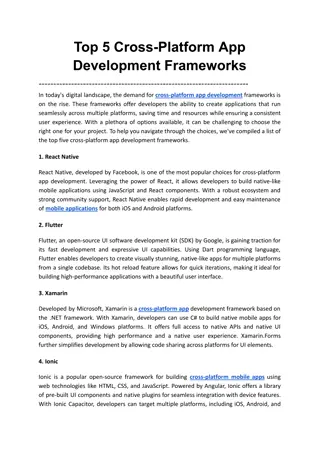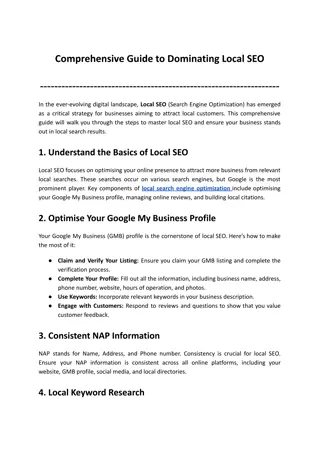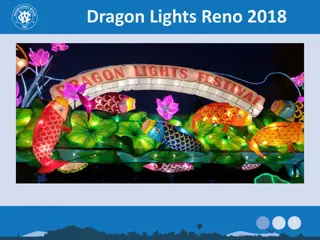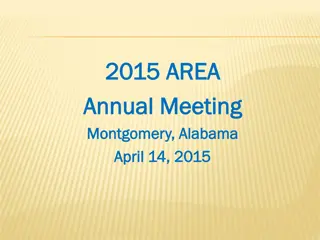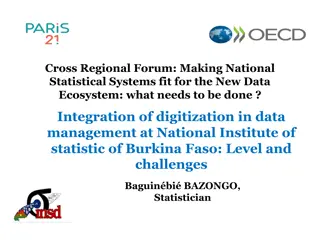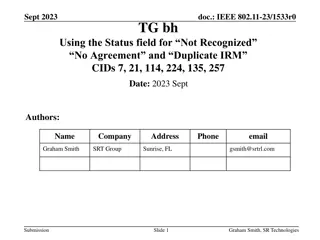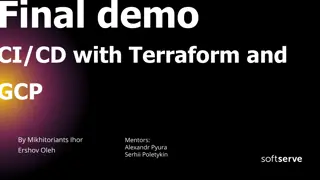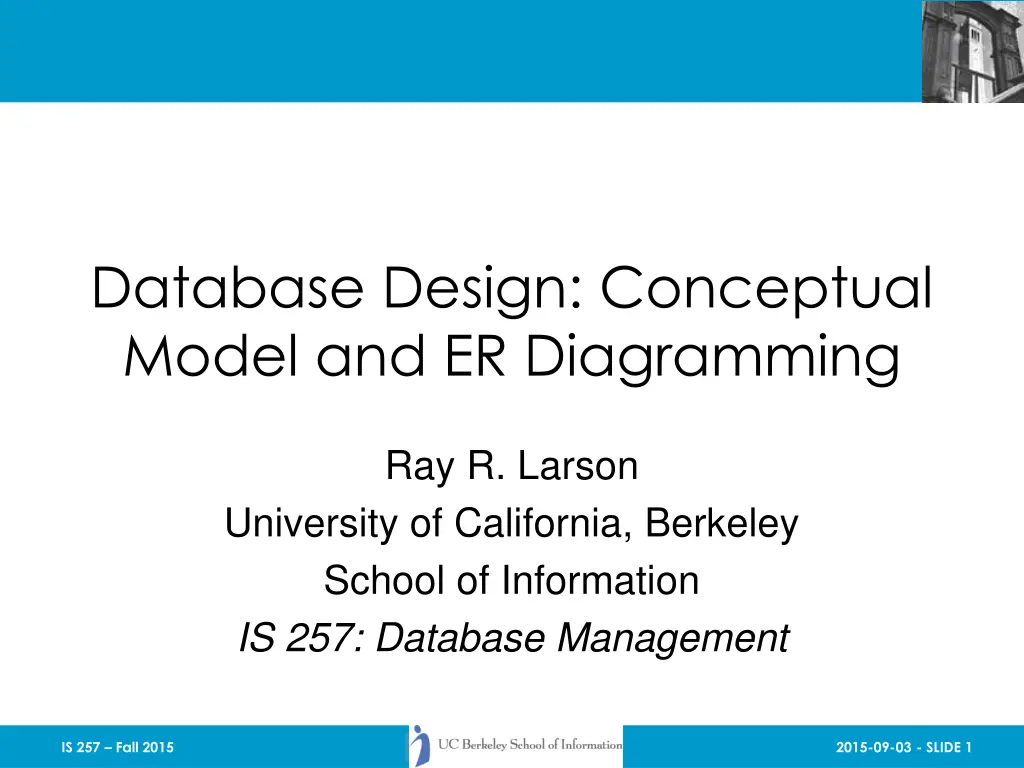
Understanding Information Systems Architecture and Database Design Concepts
Explore the importance and benefits of Information Systems Architecture (ISA) in guiding the future structure of information systems within organizations, alongside insights into database design and ER diagramming concepts. Gain a foundational understanding of ISA frameworks and their role in strategic planning, communication with management, and technology evaluations.
Download Presentation

Please find below an Image/Link to download the presentation.
The content on the website is provided AS IS for your information and personal use only. It may not be sold, licensed, or shared on other websites without obtaining consent from the author. If you encounter any issues during the download, it is possible that the publisher has removed the file from their server.
You are allowed to download the files provided on this website for personal or commercial use, subject to the condition that they are used lawfully. All files are the property of their respective owners.
The content on the website is provided AS IS for your information and personal use only. It may not be sold, licensed, or shared on other websites without obtaining consent from the author.
E N D
Presentation Transcript
Database Design: Conceptual Model and ER Diagramming Ray R. Larson University of California, Berkeley School of Information IS 257: Database Management IS 257 Fall 2015 2015-09-03 - SLIDE 1
Announcements Accounts and MySQL access Assignment 1 on web site (more at end of class) IS 257 Fall 2015 2015-09-03 - SLIDE 2
Lecture Outline Review Information Systems Planning Information Systems Architecture Information Engineering Database Design ER Diagrams Developing the Conceptual Model for the Diveshop Database IS 257 Fall 2015 2015-09-03 - SLIDE 3
Lecture Outline Review Information Systems Planning Information Systems Architecture Information Engineering Database Design ER Diagrams Developing the Conceptual Model for the Diveshop Database IS 257 Fall 2015 2015-09-03 - SLIDE 4
Information Systems Architecture An ISA is a conceptual blueprint or plan that expresses the desired future structure for information systems in an organization It provides a context within which managers throughout the organization can make consistent decisions concerning their information systems Quotes from McFadden (Modern Database Management, 4th edition), Ch. 3 IS 257 Fall 2015 2015-09-03 - SLIDE 5
Information Systems Architecture Benefits of ISA: Provides a basis for strategic planning of IS Provides a basis for communicating with top management and a context for budget decisions concerning IS Provides a unifying concept for the various stakeholders in information systems. Communicates the overall direction for information technology and a context for decisions in this area Helps achieve information integration when systems are distributed (increasing important in a global economy) Provides a basis for evaluating technology options (for example, downsizing and distributed processing) Read Chapter 2 in Hoffer IS 257 Fall 2015 2015-09-03 - SLIDE 6
Information Systems Architecture Zachman ISA Framework components Data The what of the information system Process The how of the information system Network The where of the information system People Who performs processes and are the source and receiver of data and information. Events and Points in time When processes are performed Reasons For events and rules that govern processing IS 257 Fall 2015 2015-09-03 - SLIDE 7
Zachman Framework IS 257 Fall 2015 2015-09-03 - SLIDE 8
Information Engineering A formal methodology that is used to create and maintain information systems Starts with the Business Model and works in a Top-Down fashion to build supporting data models and process models for that business model IS 257 Fall 2015 2015-09-03 - SLIDE 9
Information Engineering Planning Analysis 1. Identify Strategic Planning Factors a. Goals b. Critical Success Factors c. Problem Areas 2. Identify Corporate Planning Objects a. Org. Units b. Locations c. Business Functions d. Entity types 3. Develop Enterprise Model a. Function decomposition b. Entity-Relationship Diagram c. Planning Matrices Design 1. Develop Conceptual Model (detailed E-R Diagram) 2. Develop Process Models (data flow diagrams) Implementation 1. Design Databases (normalized relations) 2. Design Processes a. Action Diagrams b. User Interfaces: menus, screens, reports 1. Build database definitions (tables, indexes, etc.) 2. Generate Applications (program code, control blocks, etc.) IS 257 Fall 2015 2015-09-03 - SLIDE 10
Focus In this course we will focus on the design aspects for databases We will NOT focus on interaction design or interface design (That is covered in other courses) IS 257 Fall 2015 2015-09-03 - SLIDE 11
Database Design Process Application 1 Application 2 External Model Application 3 External Model Application 4 External Model External Model Application 1 Conceptual requirements Application 2 Conceptual requirements Internal Model Conceptual Model Logical Model Application 3 Conceptual requirements Application 4 Conceptual requirements IS 257 Fall 2015 2015-09-03 - SLIDE 12
Database Design Process Conceptual Model Merge the collective needs of all applications Determine what Entities are being used Some object about which information is to maintained What are the Attributes of those entities? Properties or characteristics of the entity What attributes uniquely identify the entity What are the Relationships between entities How the entities interact with each other? IS 257 Fall 2015 2015-09-03 - SLIDE 13
Entity An Entity is an object in the real world (or even imaginary worlds) about which we want or need to maintain information Persons (e.g.: customers in a business, employees, authors) Things (e.g.: purchase orders, meetings, parts, companies) Employee IS 257 Fall 2015 2015-09-03 - SLIDE 14
Attributes Attributes are the significant properties or characteristics of an entity that help identify it and provide the information needed to interact with it or use it. (This is the Metadata for the entities.) Birthdate First Age Employee Middle Name SSN Last Projects IS 257 Fall 2015 2015-09-03 - SLIDE 15
Relationships Relationships are the associations between entities. They can involve one or more entities and belong to particular relationship types IS 257 Fall 2015 2015-09-03 - SLIDE 16
Relationships Student Attends Class Project Supplies project parts Supplier Part IS 257 Fall 2015 2015-09-03 - SLIDE 17
Types of Relationships Concerned only with cardinality of relationship 1 1 Employee Truck Assigned n 1 Employee Project Assigned m n Employee Project Assigned Chen ER notation IS 257 Fall 2015 2015-09-03 - SLIDE 18
Other Notations Employee Truck Assigned Employee Project Assigned Employee Project Assigned Crow s Foot IS 257 Fall 2015 2015-09-03 - SLIDE 19
Many to Many Relationships SSN Proj# Proj# Hours Project Assignment Is Project Assigned Assigned Employee SSN IS 257 Fall 2015 2015-09-03 - SLIDE 20
Note on drawing diagrams You will be asked to draw ER (or UML) diagrams for your personal database I prefer diagrams drawn with a drawing tool or DB Design tool There are loads of DB Design tools See, e.g., http://www.databaseanswers.org/modelling_tools.htm One that integrates well with MySQL is MySQLWorkBench http://www.mysql.com/products/workbench/ IS 257 Fall 2015 2015-09-03 - SLIDE 21
Lecture Outline Review Information Systems Planning Information Systems Architecture Information Engineering Database Design ER Diagrams Developing the Conceptual Model for the Diveshop Database IS 257 Fall 2015 2015-09-03 - SLIDE 22
Developing a Conceptual Model Overall view of the database that integrates all the needed information discovered during the requirements analysis. Elements of the Conceptual Model are represented by diagrams, Entity-Relationship or ER Diagrams, that show the meanings and relationships of those elements independent of any particular database systems or implementation details. Can also be represented using other modeling tools (such as UML) IS 257 Fall 2015 2015-09-03 - SLIDE 23
Developing a Conceptual Model Building the Conceptual Model for the Diveshop database IS 257 Fall 2015 2015-09-03 - SLIDE 24
Developing a Conceptual Model We will look at a small business -- a diveshop that offers scuba diving adventure vacations Assume that we have already done interviews with the business and found out the following information about the forms used and types of information kept in files and used for business operations... IS 257 Fall 2015 2015-09-03 - SLIDE 25
Primary Business Operations The shop takes orders from customers for dive vacations. It ships information about the dive vacation to the customers. It rents diving equipment for the divers going on the trips (these may include additional people other than the customer) It bills the customer for the vacation and for equipment rental or sales. IS 257 Fall 2015 2015-09-03 - SLIDE 26
Business Operations (cont.) It arranges sub-trips to particular dive sites at the primary location NOTE: This needs expanding e.g., charter boats, divemasters, local dive companies It provides information about the features of various sites to help customers choose their destinations. Features include sea life found at the location and shipwrecks IS 257 Fall 2015 2015-09-03 - SLIDE 27
Business Operations (cont.) Each dive order (or sale or trip) is on an invoice to one customer. Invoices contain: Line items for each type of equipment ordered, Total amount due for the invoice, Customer information: Name, address, phone, credit card info. Note: could be expanded with particular charter dates and time, dive boats, etc. Information must be kept on inventory of dive equipment. There are multiple types of dive equipment: The prices charged for sale or rental are maintained IS 257 Fall 2015 2015-09-03 - SLIDE 28
Business Operations (cont.) Destination information includes: Name of the destination information about the location (accomodations, night life, travel cost, average temperatures for different times of the year Destinations have associated dive sites Dive Sites have associated features Difficulty rating, depth, etc. Sea life Shipwrecks (as sites or at sites) Note: could be expanded to include the boats, etc. that go to specific sites IS 257 Fall 2015 2015-09-03 - SLIDE 29
Business Operations (cont.) One record is kept for each order by a customer and will include the method of payment, total price, and location information. (I.e. Customers may have multiple orders) The company needs to know how an order is to be shipped. The shop has to keep track of what equipment is on-hand and when replacements or additional equipment is needed IS 257 Fall 2015 2015-09-03 - SLIDE 30
Entities Customer Dive Order Line item Shipping information Dive Equipment/ Stock/Inventory Dive Locations Dive Sites Sea Life Shipwrecks IS 257 Fall 2015 2015-09-03 - SLIDE 31
Diveshop Entities: DIVECUST ZIP/Postal Code City State/Prov Street Country Name Phone DiveCust First Contact Customer no IS 257 Fall 2015 2015-09-03 - SLIDE 32
Diveshop Entities: DIVEORDS Ship Via Sale Date Customer No Payment Method DiveOrds Order no CCNumber Vacation Cost CCExpDate No of People Destination Return Date Depart Date IS 257 Fall 2015 2015-09-03 - SLIDE 33
Diveshop Entities: DIVEITEM Rental/ Sale Qty Item no Line Note DiveItem Order no IS 257 Fall 2015 2015-09-03 - SLIDE 34
Diveshop Entities: SHIPVIA Ship Via Ship Cost ShipVia IS 257 Fall 2015 2015-09-03 - SLIDE 35
Diveshop Entities: DIVESTOK Reorder Point On Hand Cost Equipment Class Sale Price Rental Price Description DiveStok Item No IS 257 Fall 2015 2015-09-03 - SLIDE 36
Diveshop Entities: DEST Spring Temp (C) Spring Temp (F) Avg Summer Temp (C) Temp (C) Avg Summer Temp (F) Temp (F) Destination name Fall Dest Temp (C) Fall Destination no Temp (F) Winter Temp (C) Accommodations Travel Cost Body of Water Winter Temp (F) Night Life IS 257 Fall 2015 2015-09-03 - SLIDE 37
Diveshop Entities: SITES Site Site Notes Distance From Town (M) Highlight Distance From Town (Km) Site Name Destination no Depth (ft) Sites Site no Depth (m) Visibility(ft) Skill Level Visibility (m) Current IS 257 Fall 2015 2015-09-03 - SLIDE 38
Diveshop Entities: BIOSITE Species No Site No BioSite IS 257 Fall 2015 2015-09-03 - SLIDE 39
Diveshop Entities: BIOLIFE Species Name Length (cm) Length (in) Common Name Notes external Graphic external Category BioLife Species no IS 257 Fall 2015 2015-09-03 - SLIDE 40
Diveshop Entities: SHIPWRCK Type Interest Tonnage Length (ft) Category Length (m) Site no Shipwrck Beam (ft) Ship Name Graphic external Beam (m) Condition Passengers/ Crew Cause Survivors Comments external Date Sunk IS 257 Fall 2015 2015-09-03 - SLIDE 41
Functional areas Ordering Inventory Supplies Shipping Billing Location/Site Selection We will concentrate on Ordering and Location/Site Selection (these are joined tasks) IS 257 Fall 2015 2015-09-03 - SLIDE 42
Ordering Customer (DIVECUST) Orders (DIVORDS) Customers place Orders Each Order needs Customer information IS 257 Fall 2015 2015-09-03 - SLIDE 43
Ordering ShipVia Ship Via Customer No ship DiveCust DiveOrds Orders Customer No DiveItemRepeating attribute Order No IS 257 Fall 2015 2015-09-03 - SLIDE 44
Ordering Normalization ShipVia Ship Via Item No Customer No Ship Order No Qty DiveOrds DiveItem DiveCust Orders Contains Order No Rental/sale Customer No IS 257 Fall 2015 2015-09-03 - SLIDE 45
Details of DiveItem DiveItem Item No Order No Company# Has m n Supplier DiveStok Supplies We re ignoring this part... On Hand Item No Sale Price IS 257 Fall 2015 2015-09-03 - SLIDE 46
Ordering: Full ER Customer No DiveCust 1 Destination Name Customer No ShipVia Destination no n ShipVia ShipVia 1 n n DiveOrds 1 Dest 1 Order No Destination Order No n DiveItem Item No n 1 Item No DiveStok IS 257 Fall 2015 2015-09-03 - SLIDE 47
Location/Site Selection Destination No Destination Name Destination Going to? DiveOrds Dest IS 257 Fall 2015 2015-09-03 - SLIDE 48
Destination/ Sites Destination Name Customer No Destination no 1 n DiveOrds Dest 1 Destination no Order No Destination n Site No Sites IS 257 Fall 2015 2015-09-03 - SLIDE 49
Sites and Sea Life 1 Destination no Site No Sites Multiple occurrences of sea life... BioLife IS 257 Fall 2015 2015-09-03 - SLIDE 50

